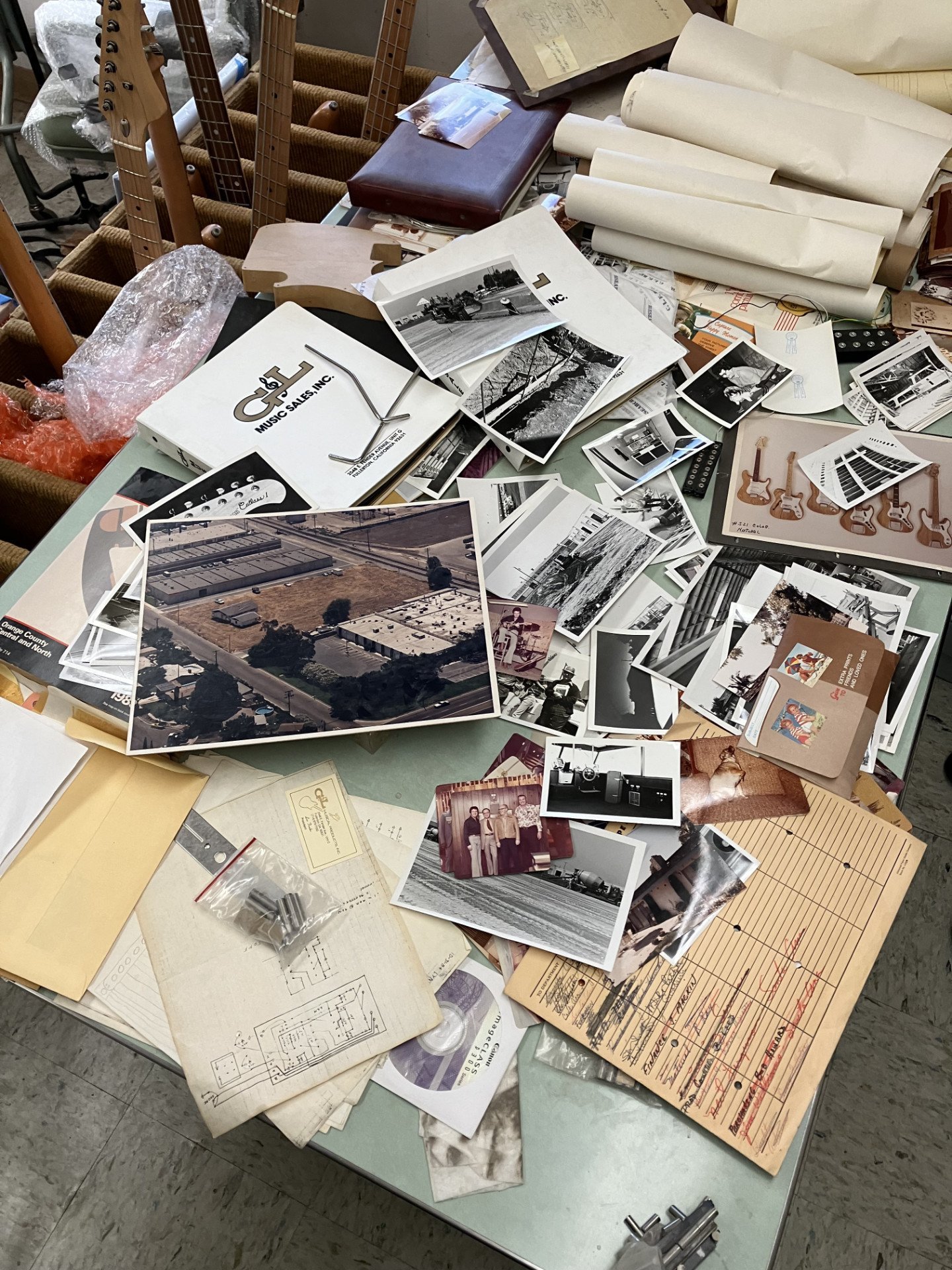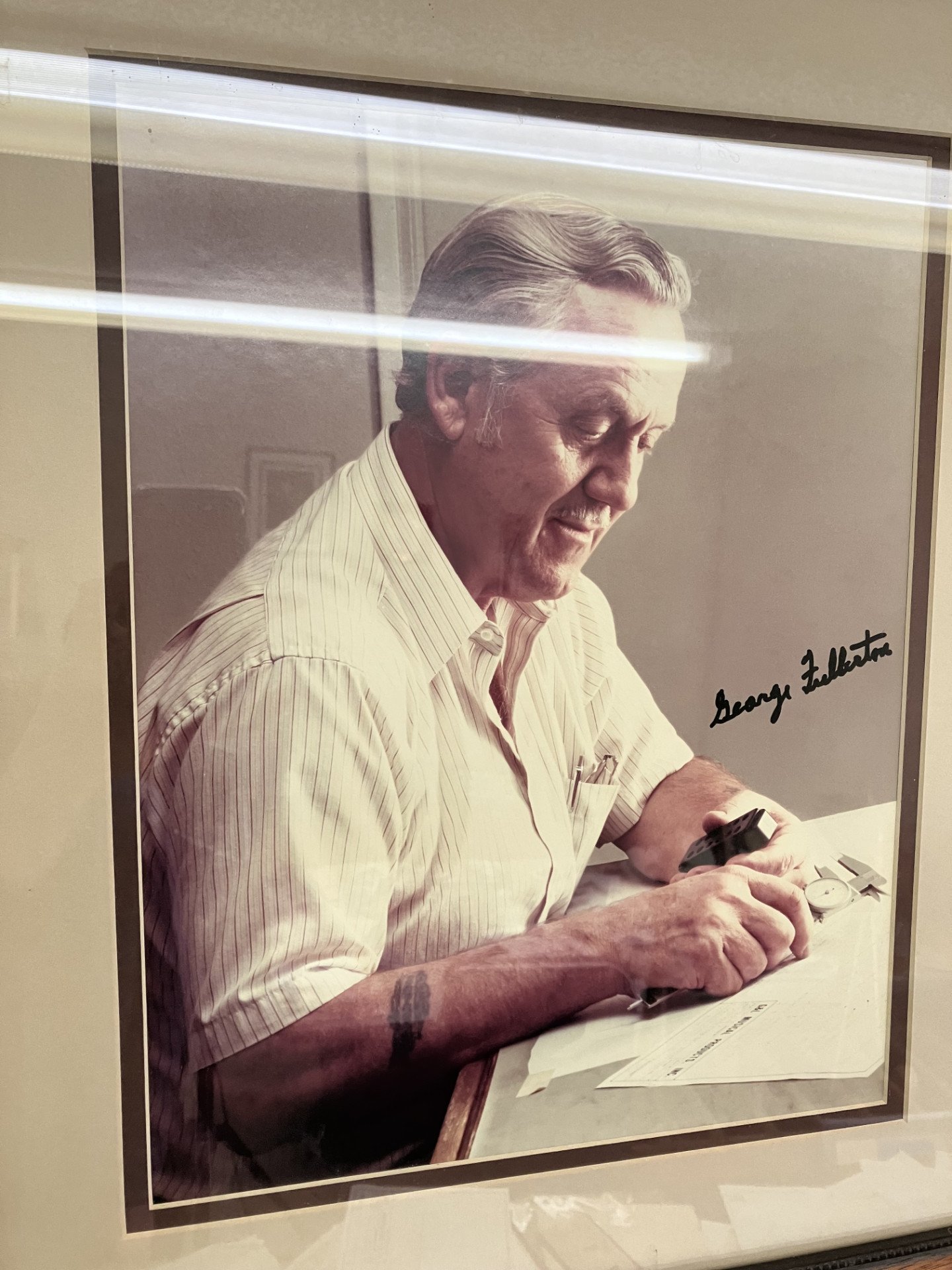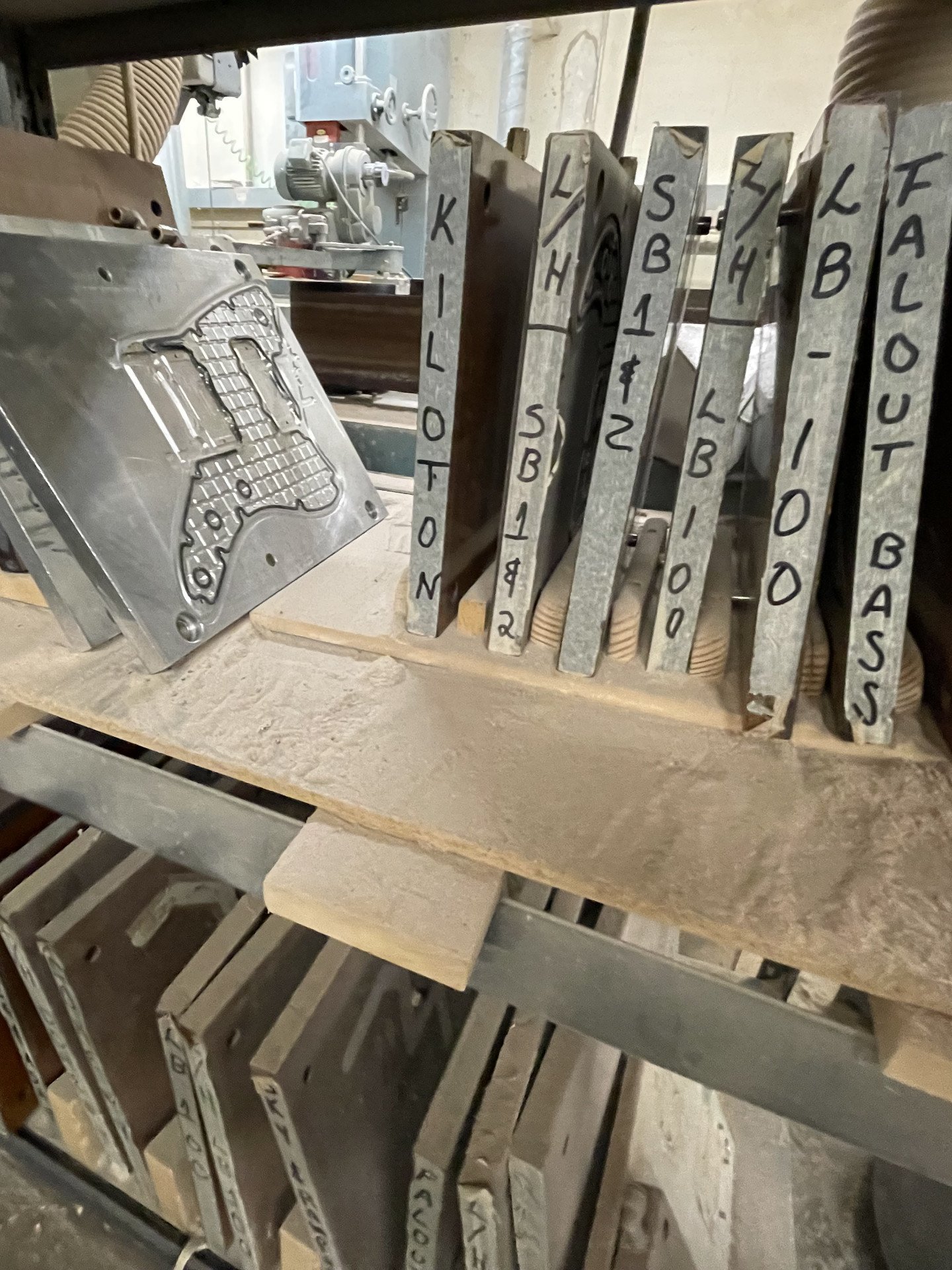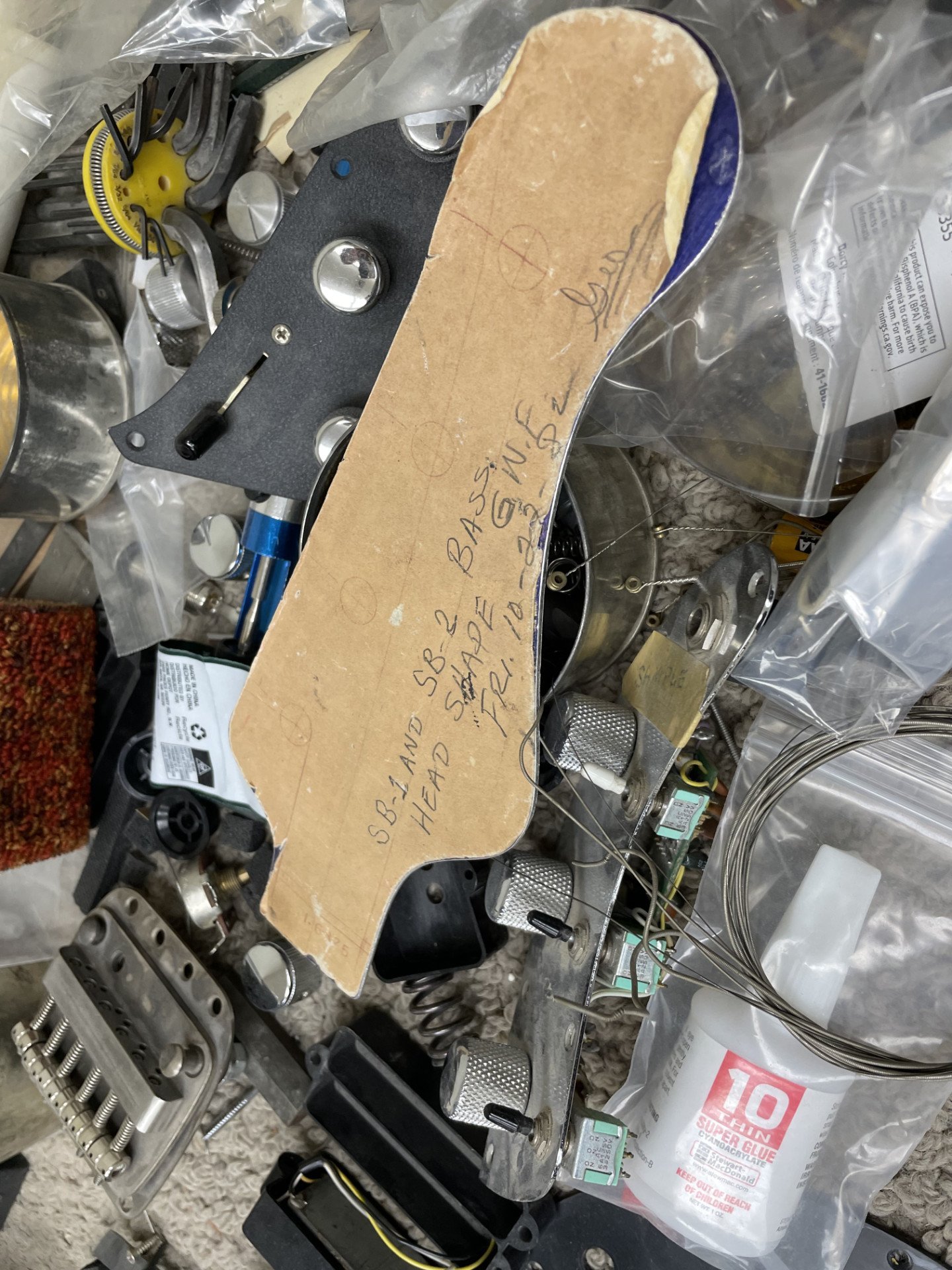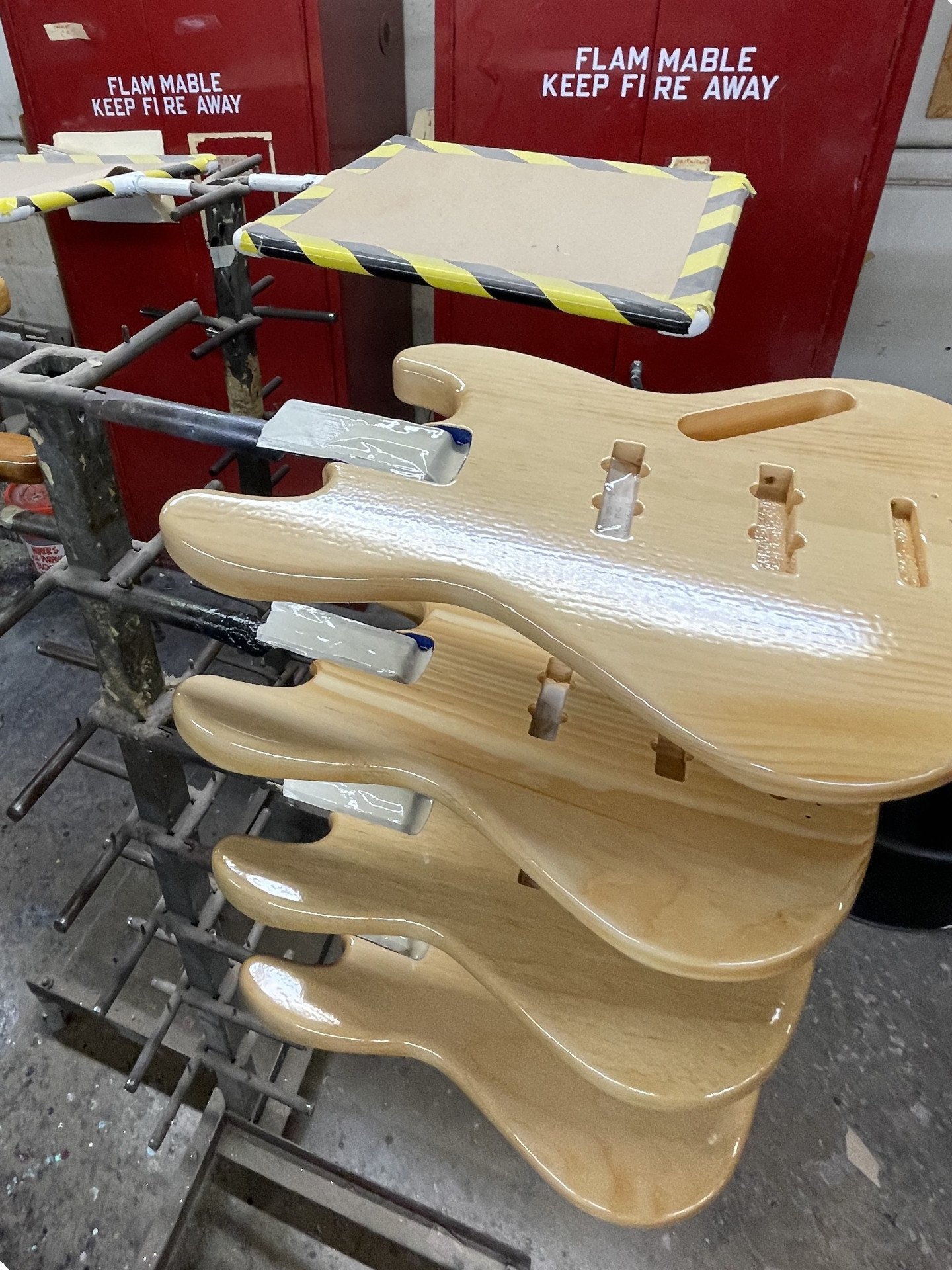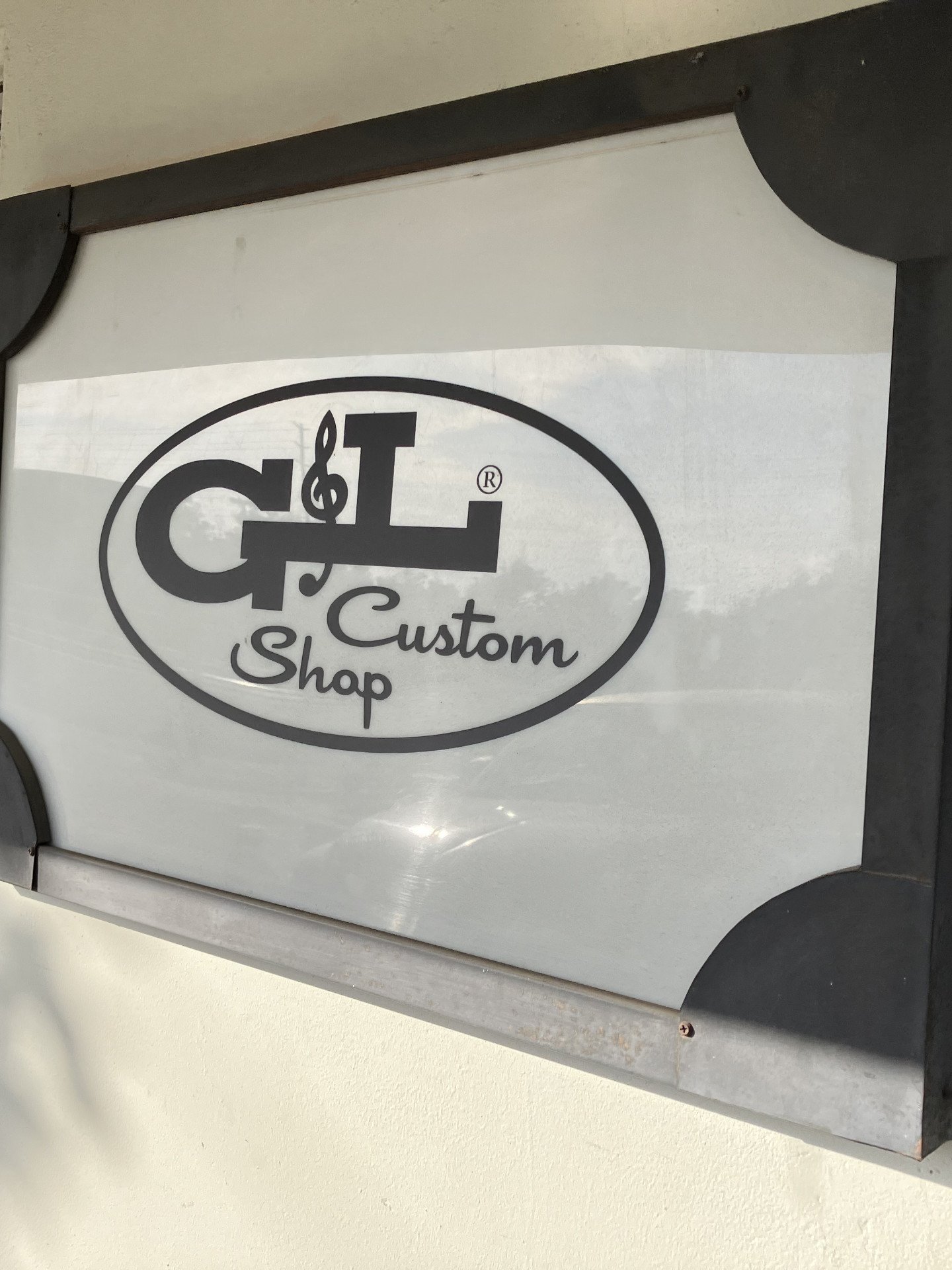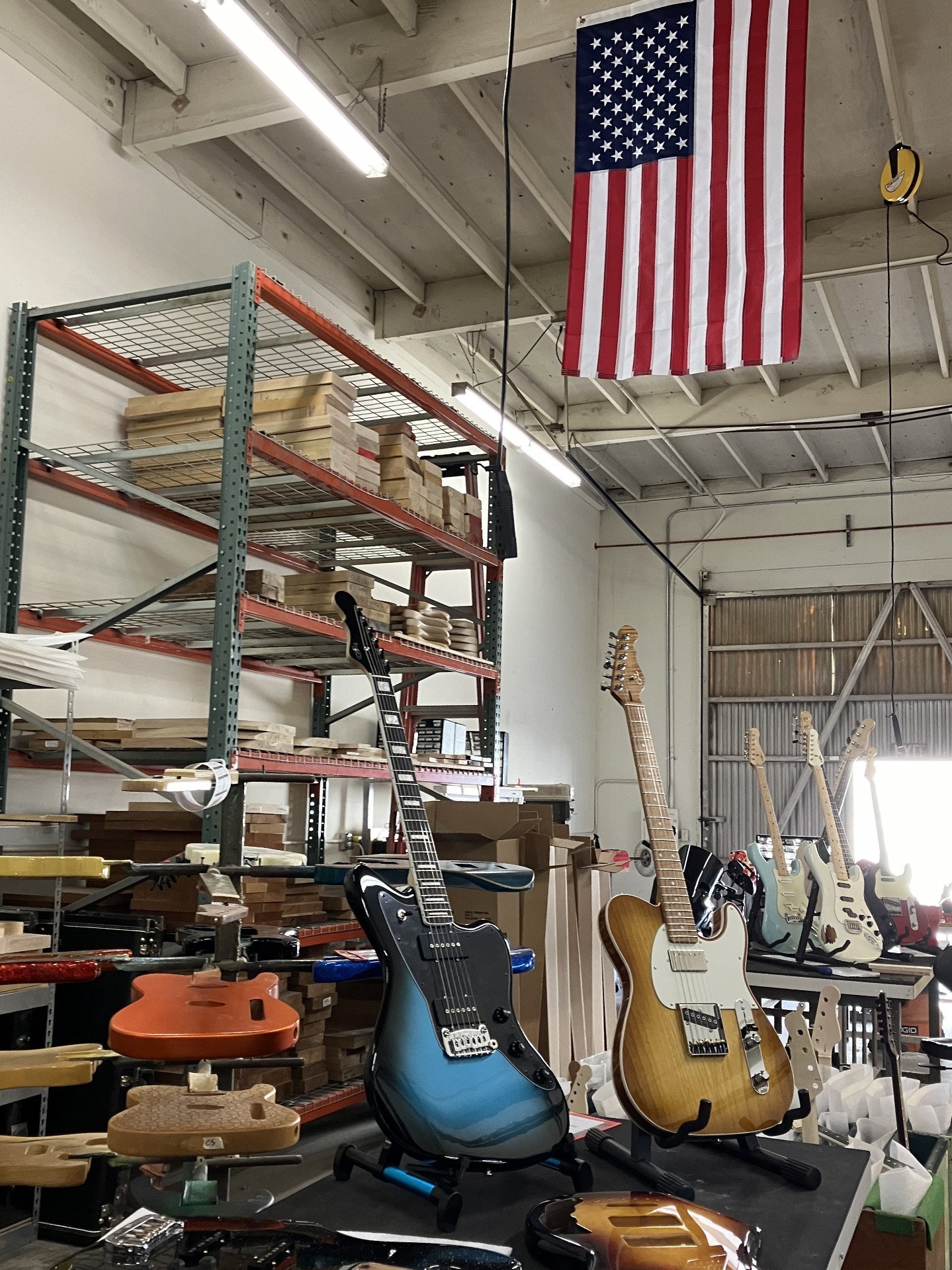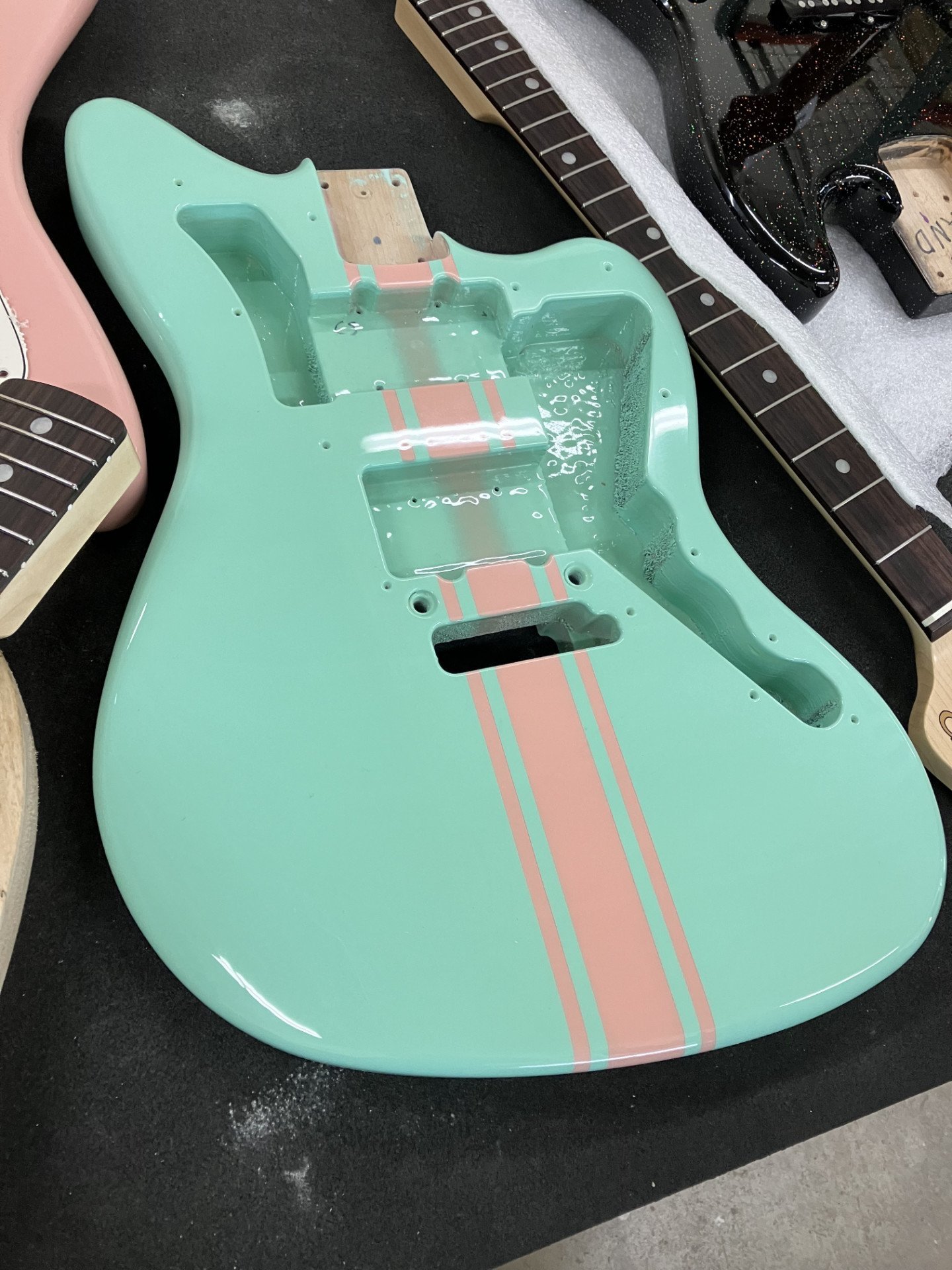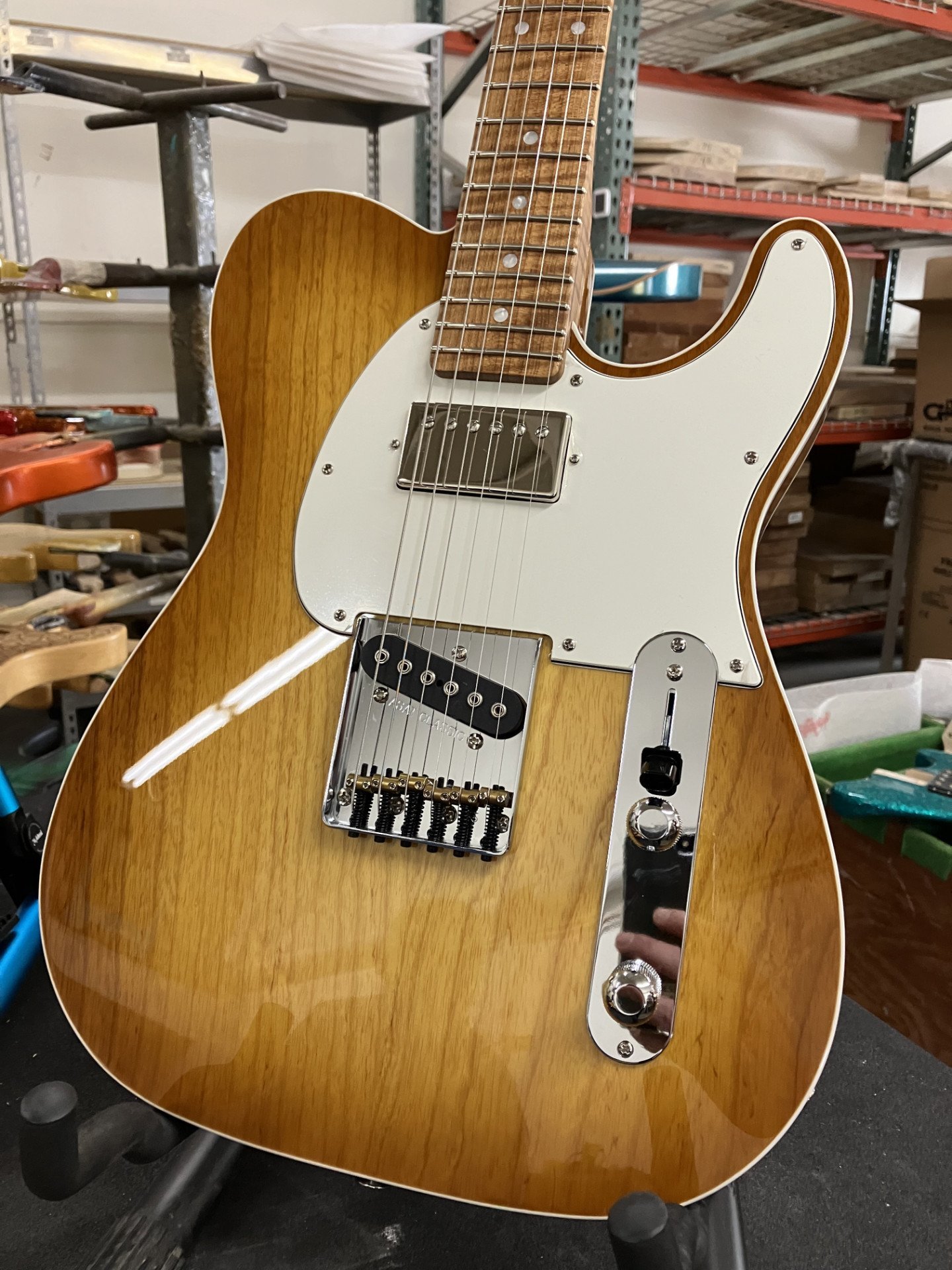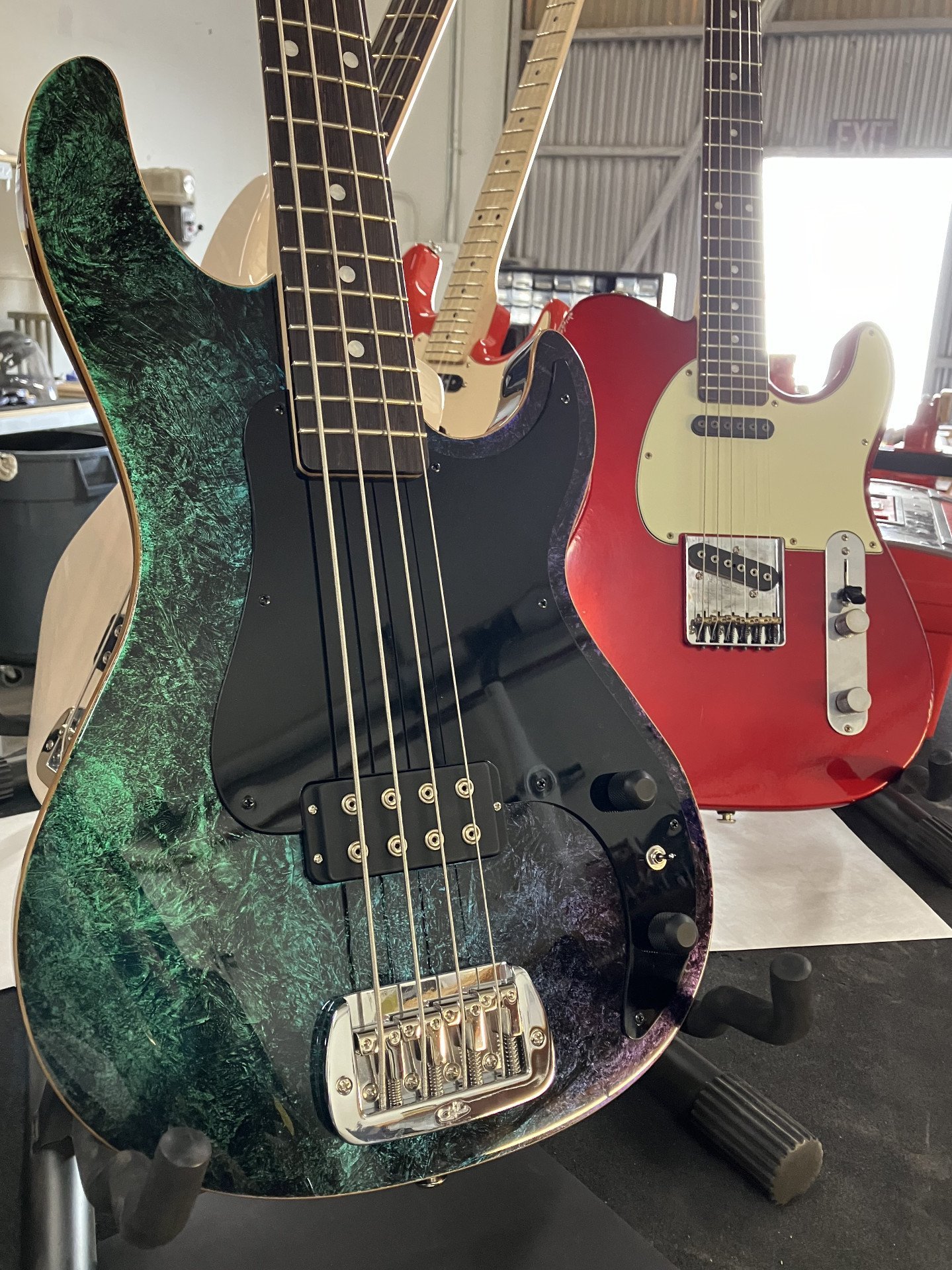G&L: The legacy of Leo Fender
G&L is based in Fullerton, California, the place where Leo Fender developed his first guitars and revolutionised pop and rock music forever. In 1979, Leo Fender and George Fullerton founded the G&L brand with the aim of taking their electric guitar designs to a new level. They wanted to realise the innovations they had gathered from decades of experience and feedback from numerous musicians.
Today, G&L guitars and basses are the first choice for artists such as Jerry Cantrell (Alice in Chains), Tom Hammilton (Aerosmith), Peter Frampton, Elliot Easton (The Cars, Creedence Clearwater Revisted) and The Iron Maidens.
At the 2024 NAMM Show, Algam Dach met David McLaren, who has been managing Leo Fender's legacy for three decades and creating exciting new guitars at G&L from the DNA of Leo's design drawings.
Can you tell us something about the history of CLF and G&L?
Thank you for visiting us here at the CLF Research Factory on Fender Avenue in Fullerton, California. The building where we manufacture G&L guitars today was previously the birthplace of another famous guitar and bass brand. After the sale of Fender to CBS in April 1965, Leo founded CLF Research to act as a consultant for CBS-Fender. From 1965 to 1970, he worked as a consultant for Fender. Over the years, however, Leo was no longer able to contribute to the company in the way that suited his nature as a tinkerer and inventor. So he founded Clarence Leo Fender Research, or CLF Research for short, just a mile away from where he had founded Fender in 1946. In 1974 and 1975, only prototypes were developed in the CLF Factory, but between 1976 and 1979, the factory actually produced instruments - mainly for Music Man at the time. As a result, Music Man even wanted to buy the factory, which Leo Fender resisted due to his previous experience. So in 1980, Leo founded his own company, G&L, to produce his new creations under his own brand.
MFD pickups, the Saddle Lock Bridge, the Dual Fulcrum Vibrato, the Expander Switch, the Tri Tone Preamp or the PTB circuit - Leo seemed to improve its classic designs endlessly. Can you tell us about these (and other) typical innovations that characterise G&L instruments as the best Leo-Fender designs of all time?
For the sake of understanding and correct historical classification, I would like to say that Leo's intention with G&L was to produce his ideas independently and without external influence. Many of his ideas, such as the Saddle Lock Bridge, which is superior in terms of sustain and tuning stability, were also used in the first Music Man models, but Leo wanted to create instruments that fully corresponded to his vision.
The dual fulcrum vibrato is connected to the guitar body via two bolts and not with six wood screws, as with the synchronised tremolo of the classic Stratocaster design. Leo Fender's new design offers a more musical and sensitive playing feel as well as significantly greater tuning stability - especially in floating mode. The bridge plate is also made of hardened steel, which sits on two razor-sharp bolts with solid brass inserts anchored in the body. The bolts are milled from cold-rolled steel blocks and heat-treated for maximum hardness before coating. All of this sets the system massively apart from other free-floating vibrato systems. Nowadays, we have refined the system even further - for example, the bridge block is made of solid, cold-rolled and CNC-machined steel, which provides even more sustain and overtones. It's the best Dual Fulcrum system ever.
G&L CEO David McLaren in January 2024
The Magnetic Field Design (MFD) pickups are absolutely characteristic of G&L. The MFD pickups use ceramic bar magnets that are equipped with height-adjustable polepieces, allowing the pickup strength to be adjusted per string. This gives the guitarist or bassist more tonal flexibility than conventional single-coil designs with Alnico magnets, which only allow the height of the entire pickup to be adjusted. Magnetic Field Design pickups offer an unmistakable tone, with plenty of brilliance and at the same time a silky and never intrusive treble spectrum.
The Passive Treble and Bass system, abbreviated to PTB, extends the typical tone control of the guitar in a very practical way. Not only can the treble be lowered, but bass frequencies can also be continuously reduced, giving the guitar a more wiry and in some situations more assertive sound. With high-gain sounds, for example, when the fuzz and distortion pedals are turned up high, the guitar can be wonderfully adjusted to the sweet spot. Another stroke of genius was the expander switch, which can be activated via a mini-switch on the Fullerton guitars and via a push-pull button on the Tribute guitars. On a guitar equipped with three single coils, it activates the neck pickup in combination with the bridge pickup, for example, to create exciting sounds.
Leo Fender also came up with some smart ideas for the active electronics that were brand new in the mid-seventies. His Tri-Tone system offers a variety of tone control options with mini toggle switches for pickup selection, signal routing, switchable preamp and high-spec potentiometers for volume, treble and bass.
G&L now also offers CLF models. Can you tell us something about the series and the models?
The models in the CLF Research series, such as the L-2000 or S-500, are inspired by the spirit of the early G&L guitars and Leo Fender's design drawings. They therefore have the characteristics of this early phase of G&L: the old headstock, the old controls and switches favoured by George Fullerton, as well as the magnetic field pickups. The magnetic field humbuckers used here were further developed by my brother. We really enjoy building these models. In general, we are always keen to research the history of CLF Research. After all, G&L didn't come into being in a vacuum, but is the result of long-term development. For example, there was the Espada, which Leo developed for CBS-Fender between 1967 and 1969. The guitar consisted of a Telecaster body that Fender had sent to Leo and he fitted it with split-coil pickups with active electronics and a new bridge design that transmitted more vibrational energy to the body. The guitar should have been the hot new Fender guitar for 1970. Even in December 1969, Leo was still hard at work on new developments - we still have all the drawings and notes here. We are very proud to finally bring it to market today, 55 years after its development.
What is your approach to building G&L guitars these days? Can you tell us about the machines you work with here at G&L?
If you look at the workbenches here, you'll see that they look exactly like the old black and white photos of the Fender factory. That's because Leo had the factory here set up exactly as he knew it from Fender. He commissioned Ronny Bears to build him exactly the same workbenches and ordered the same milling and sanding machines that he had previously worked with. For example, here we have a bandsaw that Leo Fender bought brand new in 1965 and which is still working faithfully. These machines are designed so that every part can be replaced. With the regular maintenance we do here, these machines can be used for a hundred years - or even longer, who knows! (laughs) No, seriously, the machines come from a time when high-quality machines were simply made in the USA and I like to talk about an American Experience, which is what every G&L Fullteron Deluxe or Custom Shop guitar offers: The instruments are made with high-quality materials and high-quality machines.
We've seen that you make very exciting instruments in the Custom Shop - models like S-500s, Legacys or Skyhawks without pickguards, with inverted headstocks, bindings and very individual colours. When did you set up the Custom Shop and who is responsible for it? Can customers order their own "dream guitars" here?
There are plenty of options, but as you can imagine, customers are always asking us for more. The options have always been an integral part of G&L's product policy. We launched the Custom Shop in 2018 with the idea that we would simply have more time and room for manoeuvre to implement customer wishes in the best possible way and at our leisure. In principle, you can order anything from us that corresponds to the spirit of Leo Fender.
The Fullerton and Custom Shop models are made in an area of California that has a very special atmosphere, not far from Fender Avenue. Can you tell us something about this place?
The property on which we are located here was purchased by Leo Fender in 1967. There are ten identical commercial buildings here, which have been let to various parties. Or, if things went well with CLF, he could use the buildings completely. Each of these buildings is divided into ten small boxes - each with an office at the front and a workshop at the back. The old Fender buildings were organised in exactly the same way. The building where we manufacture G&L today was completed in 1974.
G&L also offer exciting products from overseas that have the same specifications for which G&L is so popular, at excellent value for money. How long has the Tribute range been around and how many models does it include?
Algam-DACH product specialist Philipp Opitz in conversation with G&L CEO David McLaren
We launched the Tribute series in 2003. We had already been in contact with the operators of the Cort/Coretek factories for many years. As you rightly say, the guitars are equipped with the same features as our typical G&L guitars. We're sending Cort the pickups, hardware and electronics to give the guitars the Tri-Tone circuit, the passive treble and bass control and the like. We thought of all this to make these great features available to musicians with a smaller budget.
We have seen some very exciting content on social media and on the redesigned website. Paint finishes like Andromeda or Purple Burst can be very interesting for young and trend-setting bands. All in all, G&L's approach is very modern, despite its ties to tradition. What can we expect from G&L in the future?
I shoot videos at regular intervals in which I explain the typical G&L features or models. In addition, we also publish videos without language on models like the Commanche, SB-2 or Asat Special - here we simply let the music, the sounds and the aesthetics of the guitars speak as a universal language. Through our Instagram pages for G&L and CLF Research, we want to offer people further access to the world of Leo Fender. Sometimes new ideas for new models also emerge via these platforms. This interaction via the internet is a great innovation for us to generate new models based on Leo's ideas.



